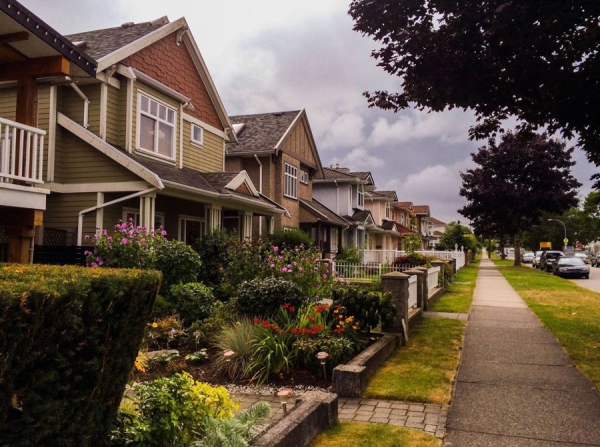Private house VS high-rise building

The experiment with private houses in the USA was more successful than in other countries. America is called one-story - about 65% of the population lives in private houses. Continuing yesterday's topic, let's talk a little more about the life of ordinary Americans in a private home and find the pros and cons of such housing.
When I walk through private neighborhoods, I often notice signs that say things like “if you move here, be aware that your neighbors are watching.” I have had situations where I was asked what I forgot in this area if I don’t live here. That is, on the street where everyone knows their neighbors, any stranger looks suspicious. In fact, other than admiring private houses, there is really nothing else to do there.
Americans have been instilled with individualism and shared responsibility since childhood. This works in terms of housing, but not in high-rise buildings. Imagine that 500 people live in the entrance, and someone littered in the elevator. Most likely, this garbage will remain there until the cleaning lady comes. Regular residents usually won't deal with this. Everyone will decide that this is the responsibility of someone else, because besides him, hundreds of other people live in the house, and the garbage does not interfere.
Social experiments have proven: the more people in a group, the lower the personal responsibility of everyone. For example, when a person pulls a rope alone, his expended strength is greater. And when he’s on the team, it’s less. Or here's another example. If you are given a study assignment individually, then you will have to fully invest. And if you have a joint project, then responsibility can be transferred to someone else.
The same goes for private areas. When faced with some kind of trash or just something unusual, the average resident is more likely to step up and deal with the situation themselves rather than expecting someone else to do it for them. There are 10 families living near him, not 500 people, and there is almost no one to shift responsibility to. Well, resolving the issue on his private territory is a matter of personal comfort. Agree, few people clean the staircase for the sake of overall comfort.
Americans are usually not collectivist. Because of this, the projects that I spoke about yesterday did not take root. High-rise buildings in the USA are not about comfort and general responsibility. This is about how much I want to move from there to the same private house or at least to a residential complex like mine.
We live in a house that, I think, has 4 floors, and also has a swimming pool and barbecue area. Nothing in common with a high-rise building, although in principle it is quite a residential area. This type of housing is gaining popularity. We have many common walking areas, beautiful paths, equipped areas for walking dogs, and so on. Plus, such housing is already being built next to all the necessary infrastructure. Walking to the store is a luxury that residents of private homes in America cannot boast of. People are a little isolated from amenities, so it’s impossible to live without a car, because areas can stretch for tens of kilometers.
As I said at the beginning, now about 65% of Americans live in a private home and in conditions “nowhere without a car.” It is interesting to note that from 2004 until 2016, detached houses were losing popularity. During this period, the percentage of Americans living in a single-family home fell from 69% to 63%. According to polls, this is due to the crisis, and not to the fact that the concept of the American dream has changed. People still want to live in a house and strive for this in the future.
Author: Anton Nayanzin



